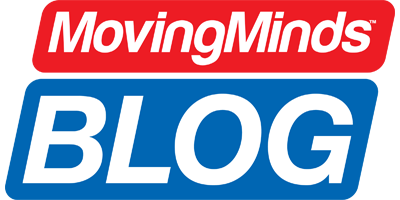You may be too young to remember the “This is your brain on drugs” movement in the 80s. It was an anti-narcotics campaign to try to prevent people from using drugs. The commercials featured an egg as “your brain” and a hot skillet as “drugs” and the commercial ended with the advertiser saying, “Any questions?”
This is Your Brain on Movement
Active Schools is doing a new take on the movement called Active Classrooms Week #thisisyourbrainonmovement December 9-13, 2019. But, the whole purpose is to encourage classroom teachers to incorporate active classrooms.
What are active classrooms? According to generic definitions, they are student-centered, technology-rich classrooms. The technology aspect is not required for a classroom to be considered active. Though, active learning incorporates a broad range of teaching strategies in which students are actively engaged in learning.
This can be done through movement, discussion, debate, or brainstorming. It is a shift from traditional lectures to break up the learning time with engaging activities in which students are involved in different ways (e.g., multiple senses). While literally having students “moving” is not required, research shows that it definitely does help.
Two Approaches to Incorporating Activity
There are two primary approaches to incorporating activity into your classroom:
- Integrating physical activity with the content you are teaching, and
- Offering physical activity that does not involve any specific academic content (sole purpose is to get students moving).
Currently, only 45% of schools provide physical activity breaks for students during the school day (CDC, 2014). And only 37% of university-level courses offered professional development for teachers to include physical activity into their classrooms (CDC, 2014).
Did you know that brain activity is much more prevalent after 20 minutes of walking as opposed to 20 minutes of sitting quietly? Classroom physical activity has been shown to improve student attention, behavior, motivation, concentration, and academic performance.
Why not feed into students’ needs and desires knowing it will most likely help? While integrating activity into your classroom can seem daunting, there are strategies and resources out there to help! This website offers a plethora of resources, data, and support for your active classroom.
Join the Movement
Join the Active Classrooms Week movement! Share your classroom successes by posting photos, videos, testimonials, and best practices of movement in the classroom. Also, use the hashtag #thisisyourbrainonmovement.
A toolkit with talking points, a classroom activity guide, flyers, logos, social media ideas, and media advisory templates are available. Have fun with this, and we look forward to seeing you move!!
References
Centers for Disease Control and Prevention. (2014). Results from the School Health Policies and Practices Study 2014. Atlanta, GA: Author.
Hillman, C. H., Pontifex, M. B., Raine, L. B., Castelli, D. M., Hall, E. E., & Kramer, A. F. (2009). The effect of acute treadmill walking on cognitive control and academic achievement in preadolescent children. Neuroscience, 159(3), 1044-1054.
Springboard to Active Schools. (2019). Integrate classroom physical activity in schools. Retrieved November 11, 2019 from https://schoolspringboard.org/wp-content/uploads/2018/11/Data_Brief_for_Classroom_PA_508.pdf
Heather is a Professor in the Department of Kinesiology and Health Promotion at the University of Kentucky. She is a former physical education teacher, and co-author of Dynamic Physical Education for Secondary School Children, 8ed. Heather was also the recipient of the NASPE Curriculum and Instruction Young Scholar Award and a AAHPERD Research Consortium Fellow.








Leave A Comment